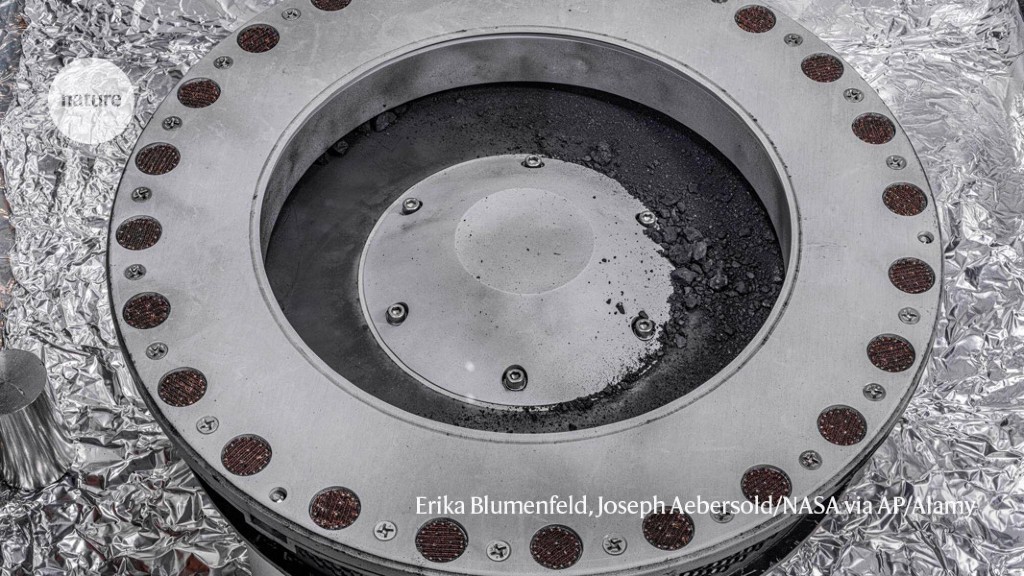Discovery of Earth’s Most Compounds: From Bennu to the Asteroids of the Early Solar System with OSIRIS-REx
NASA scientists revealed what OSIRIS-REx brought back from an asteroid 100 miles away. The seven-year mission scooped up a rock sample from Bennu in 2020, then returned it to Earth in September, parachuting it down into the Utah desert. Scientists painstakingly cleaned and shipped the capsule to Johnson Space Center in Houston, Texas, making sure none of the rocks were contaminated by exposure to oxygen, moisture, or earthly bacteria, and they’re now analyzing the precious cargo.
Scientists had known that Bennu is a carbon-rich asteroid, but early analysis suggests that some of the returned sample is as much as 4.7% carbon — among the highest percentages of extraterrestrial carbon ever measured. Carbon and oxygen are bound up in carbonate minerals, which are found in most geological samples on Earth.
As the audience roared, the video screen behind him showed a picture of pebbles and particles outside of the main sample container. He said that NASA shows that they have water in hydrated clay minerals. This carbon is 4.7 percent of the sample by weight. “The carbon and water molecules are exactly the kinds of material that we wanted to find,” Nelson said. “They are crucial elements in the formation of our own planet and they are going to help us determine the origins that helped lead to life.”
There are organic compounds made of carbon and hydrogen in Bennu. On Earth, organic compounds are found in living organisms — but also in the absence of life. Under ultraviolet light, organic patches in the Bennu samples light up like a holiday tree. Daniel Glavin, an Astrobiologist at NASA’s Goddard Space Flight Center, says that the thing is loaded with organics. This is amazing material.
The clay samples from Bennu look like fibres in electron microscopes. Water may be ancient from the dawn of the Solar System if it is locked in those clay minerals. The asteroids may have brought the water to the early Earth.
The hexagonal crystals in the other images are likely sulfur-rich. Sulfur compounds play a crucial role in determining the rate at which rocks melt, as well as being involved in biologically interesting chemical reactions. The iron-rich minerals in the Bennu samples might help catalyse chemical reactions early in the asteroid’s history.
It will take another few weeks before researchers know exactly how much of Bennu they captured. When OSIRIS-REx stretched out its robotic arm in 2020 to collect material from the asteroid’s surface, it came away with so much material that it overflowed the collecting mechanism.
However much it ultimately ends up being, it will be the most material to come back from outer space since the Apollo astronauts brought Moon rocks to Earth in the 1960s and 1970s. Hayabusa missions, which both flew to asteroids, brought back a small amount of material.
